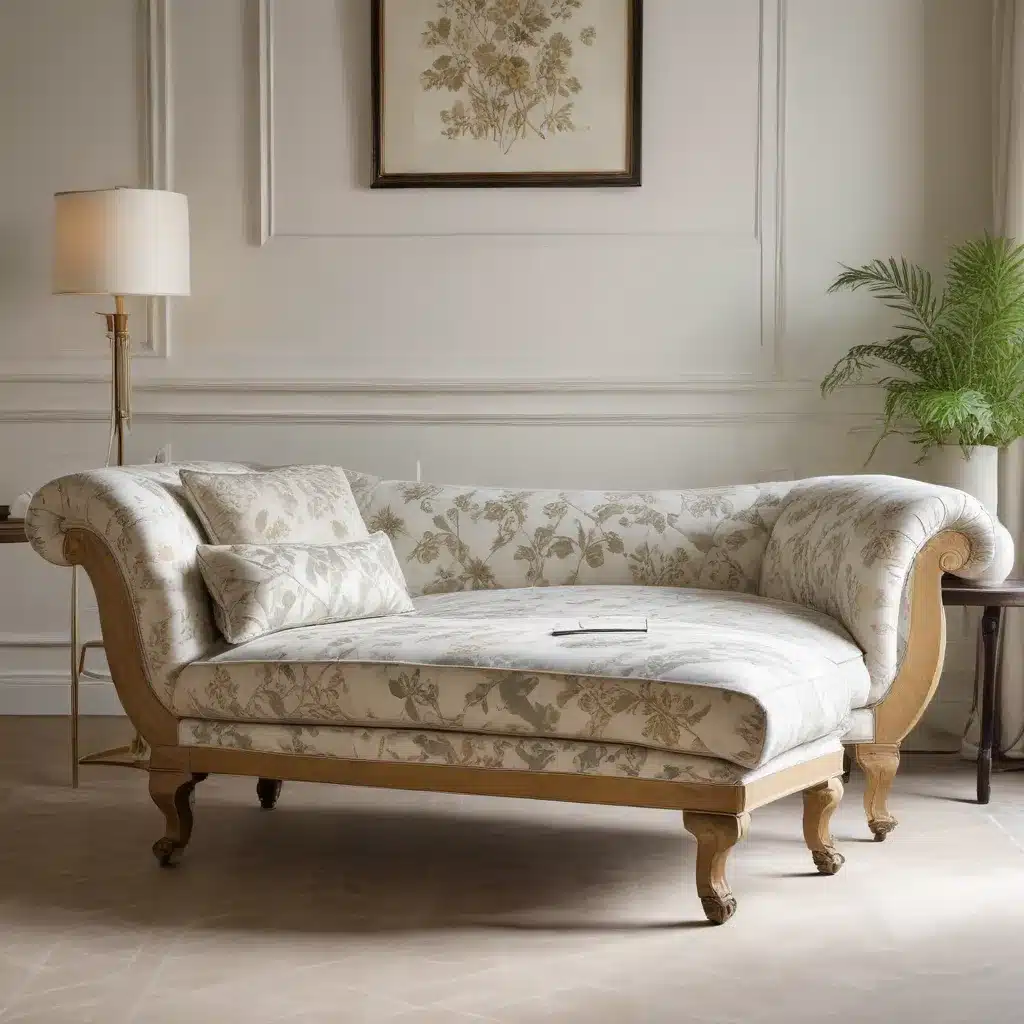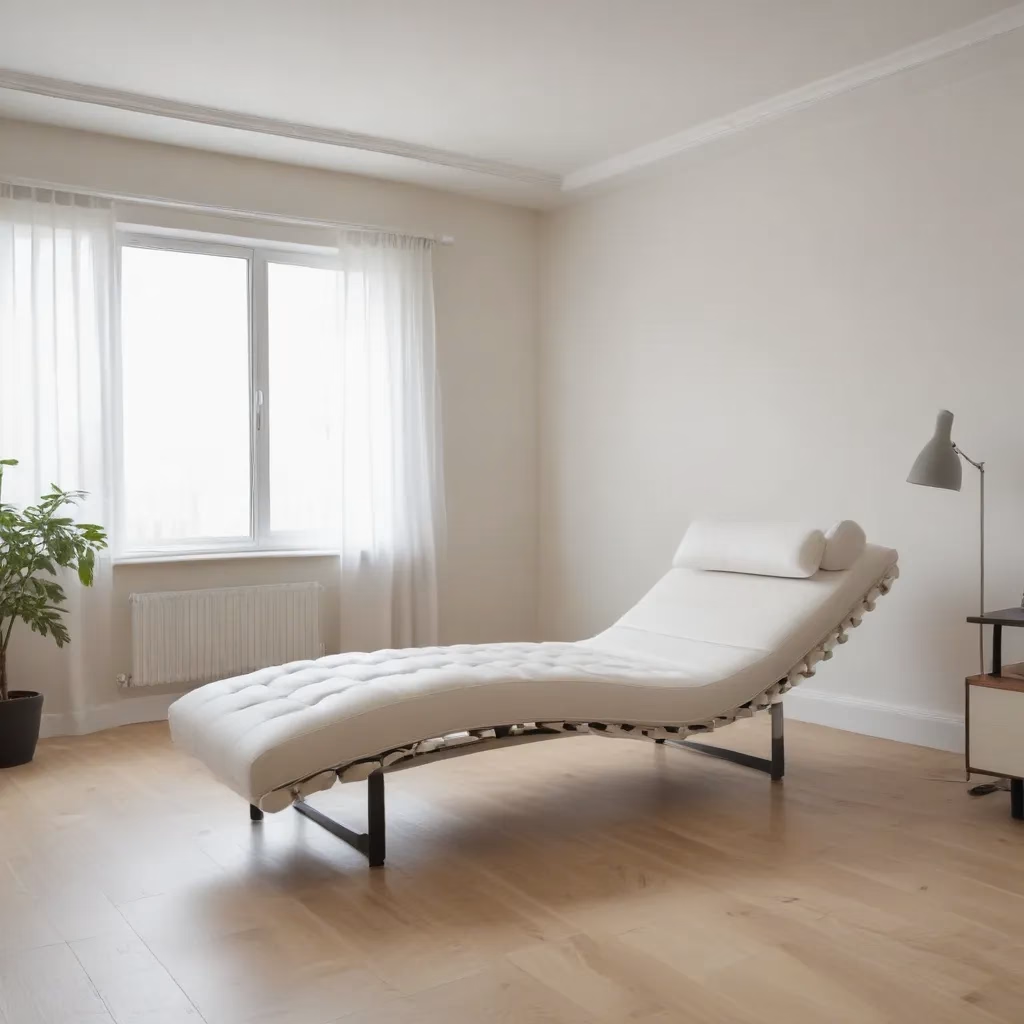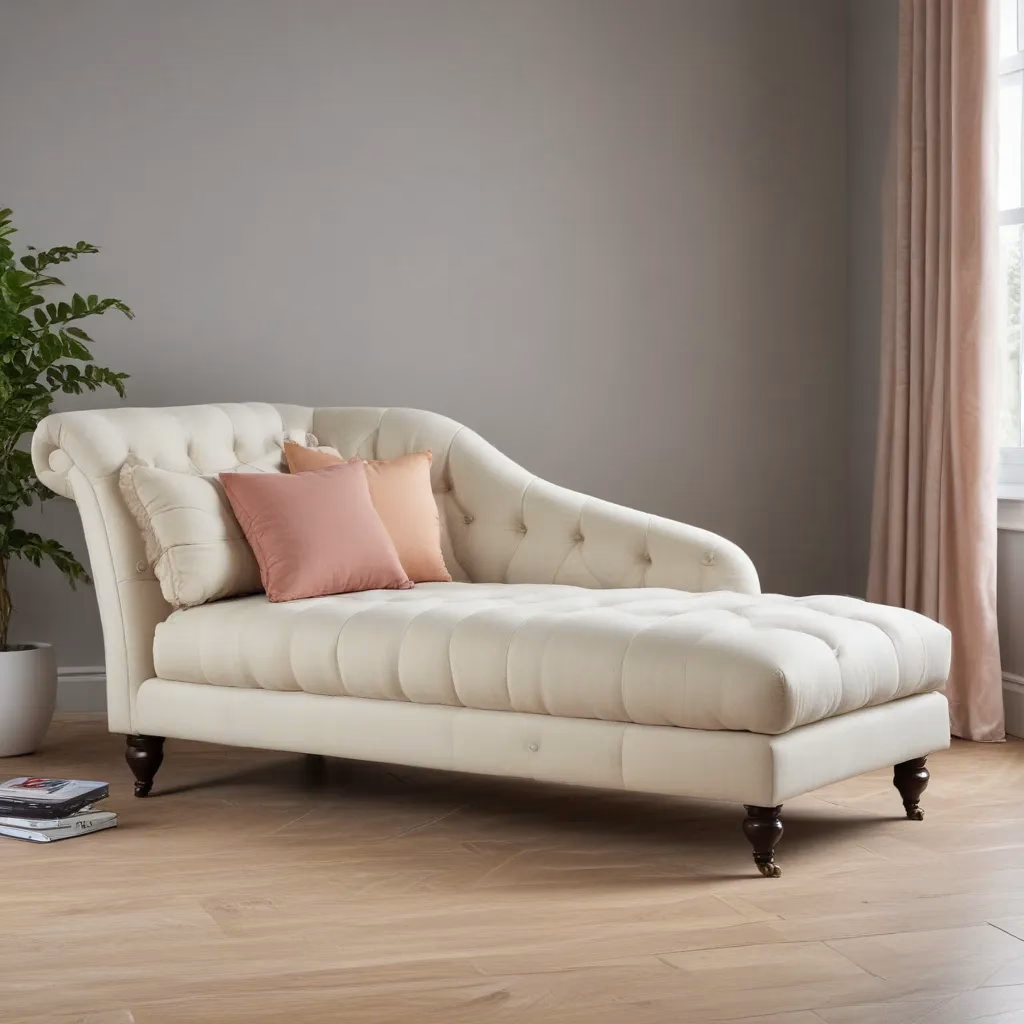
The Art of Pattern Mixing in Interior Design
As a furniture specialist with years of experience, I’ve seen firsthand how the right combination of patterns can transform a space from ordinary to extraordinary. When it comes to creating a harmonious haven centered around a chaise longue, the key lies in understanding the nuances of pattern coordination.
Pattern mixing is more than just throwing together different designs; it’s about creating a visual symphony that resonates throughout your living space. I’ve walked into countless homes where homeowners were afraid to experiment with patterns, resulting in rooms that felt flat and uninspired. But with the right approach, you can craft an environment that’s both cohesive and visually stimulating.
In my experience, the most successful pattern combinations start with a foundation of understanding. You need to consider scale, color, and theme. I always advise my clients to think of their room as a canvas, with each pattern playing a specific role in the overall composition. It’s a delicate balance, but when done right, the results can be breathtaking.
Understanding Pattern Scale and Proportion
When I’m working on a project, one of the first things I consider is the scale of patterns. It’s crucial to vary the size of your patterns to create visual interest and prevent the eye from becoming overwhelmed. I typically follow a simple rule: combine large, medium, and small-scale patterns for a balanced look.
Let’s take a chaise longue as our focal point. If you’ve chosen a large-scale floral pattern for the upholstery, you might pair it with medium-sized geometric shapes on throw pillows and a small, subtle stripe on a nearby ottoman. This variation in scale ensures that each pattern has room to breathe and doesn’t compete for attention.
I remember working with a client who was hesitant about mixing patterns. We started with a boldly patterned chaise longue featuring oversized tropical leaves. To complement this, we chose curtains with a medium-scale diamond print and added small polka-dot cushions. The result was a room that felt cohesive yet dynamic, with each pattern playing its part in the overall design.
Color Coordination: The Thread That Binds
In my years of designing interiors, I’ve learned that color is the secret ingredient that can make or break a pattern combination. When coordinating patterns, I always emphasize the importance of a unified color palette. This doesn’t mean everything needs to match perfectly, but there should be a common color thread running through your choices.
I often start by selecting a main color from the chaise longue’s pattern and use that as a guide for other elements in the room. For example, if your chaise features shades of blue and green, you might choose complementary patterns in similar hues for your curtains, rugs, or accent pieces.
One approach I’ve found particularly effective is using a 60-30-10 rule for color distribution. 60% of the room might feature your dominant color, 30% a secondary color, and 10% an accent color. This creates a balanced and pleasing visual effect, even when mixing multiple patterns.
Texture: The Overlooked Element in Pattern Mixing
While many focus solely on visual patterns, I’ve found that incorporating different textures can add depth and interest to a room. Texture acts as a subtle pattern in itself and can help bridge the gap between more pronounced designs.
When working with a chaise longue, I often recommend pairing smooth, sleek fabrics with more tactile options. For instance, a velvet-upholstered chaise can be beautifully complemented by linen throw pillows or a nubby wool blanket. These textural contrasts create a rich, layered look that engages not just the eye, but also the sense of touch.
I once worked on a project where we paired a leather chaise longue with silk brocade curtains and a plush shag rug. The interplay of textures added a new dimension to the room, making it feel both luxurious and inviting.
Balancing Bold and Subtle Patterns
In my experience, successful pattern mixing often comes down to finding the right balance between bold and subtle designs. I like to think of it as a conversation – you don’t want everyone shouting at once, but you also don’t want the room to fall silent.
When incorporating a chaise longue into your design, consider its role in the pattern hierarchy. If your chaise features a bold, eye-catching pattern, you might want to balance it with more subdued designs elsewhere in the room. Conversely, a solid-colored chaise can serve as a canvas for more adventurous pattern play in your accessories and surrounding furnishings.
I recall a project where we used a chaise longue upholstered in a striking black and white zebra print. To balance this bold choice, we kept the walls neutral and introduced subtle geometric patterns in the curtains and area rug. The result was a room that felt cohesive and stylish, with the chaise as a clear focal point.
The Role of Negative Space in Pattern Coordination
One aspect of pattern mixing that I find often overlooked is the importance of negative space. In my years of experience, I’ve learned that giving patterns room to breathe can make all the difference in creating a harmonious environment.
When working with a patterned chaise longue, I always ensure there’s enough solid color or empty space around it to allow the pattern to shine. This might mean choosing solid-colored walls or leaving some areas of the room relatively unadorned.
I remember a project where we had a beautifully patterned chaise longue with an intricate floral design. Instead of cluttering the space around it, we opted for simple, streamlined furniture and minimal wall decor. This approach allowed the chaise to be the star of the show, while still maintaining a sense of balance in the room.
Mixing Pattern Styles: From Traditional to Contemporary
One of the most exciting aspects of pattern mixing is the opportunity to blend different styles. In my work, I’ve found that combining traditional and contemporary patterns can create a unique and personalized look.
When working with a chaise longue as a centerpiece, I often encourage clients to think outside the box. For instance, you might pair a classically styled chaise with modern geometric patterns in your accessories, or vice versa. This juxtaposition of styles can add depth and character to your space.
I once worked on a project where we combined a chaise longue upholstered in a traditional damask pattern with throw pillows featuring contemporary abstract designs. The result was a space that felt both timeless and fresh, bridging the gap between old and new.
Pattern Repetition: Creating Cohesion in Your Space
In my experience, one of the most effective ways to create a sense of harmony when mixing patterns is through repetition. This doesn’t mean using the exact same pattern throughout the room, but rather echoing similar elements or themes.
When working with a patterned chaise longue, I often look for ways to repeat certain motifs or colors in other areas of the room. This might mean choosing curtains with a similar color palette or incorporating throw pillows that feature a scaled-down version of the chaise’s pattern.
I recall a project where we had a chaise longue with a bold floral pattern. We echoed this floral theme in a more subtle way through the room’s artwork and in the embroidery on the window treatments. This repetition created a sense of continuity and flow throughout the space.
The Impact of Lighting on Pattern Perception
One aspect of pattern coordination that I find often overlooked is the impact of lighting. In my years as a furniture specialist, I’ve seen how different lighting conditions can dramatically alter the perception of patterns and colors.
When working with a patterned chaise longue, I always consider how it will look under various lighting conditions. Natural daylight can bring out different aspects of a pattern compared to artificial lighting, and the placement of lamps or overhead fixtures can create interesting shadows and highlights.
I remember a project where we had a chaise longue with a subtle, tone-on-tone pattern. During the day, it looked elegant and understated, but we installed strategic lighting that made the pattern pop and come alive in the evening. This dual personality added an extra layer of interest to the room.
Seasonal Pattern Changes: Keeping Your Space Fresh
One of the joys of working with patterns is the ability to easily refresh your space with the changing seasons. As someone who’s been in the furniture industry for years, I’ve seen how small changes in patterns can transform a room’s atmosphere.
When you have a chaise longue as a central piece, it can serve as an anchor for seasonal updates. You might keep the chaise itself consistent but change out throw pillows, blankets, or nearby accessories to reflect the time of year.
I once worked with a client who had a neutral-toned chaise longue. We created a set of seasonal throw pillows – florals for spring, nautical stripes for summer, warm plaids for fall, and rich velvets for winter. This simple change allowed the room to evolve throughout the year while maintaining its core design.
Incorporating Personal Style in Pattern Mixing
In my experience, the most successful interiors are those that reflect the personality of the homeowner. When it comes to mixing patterns, I always encourage my clients to incorporate elements that speak to their personal style and interests.
A chaise longue can be a great canvas for expressing individuality through pattern. Whether you’re drawn to bold, graphic prints or soft, romantic florals, your choice of pattern can say a lot about who you are.
I recall working with an avid traveler who wanted their home to reflect their global adventures. We chose a chaise longue upholstered in a subtle batik pattern and paired it with throw pillows featuring maps and geometric designs inspired by various cultures. The result was a space that not only looked beautiful but told a story.
The Do’s and Don’ts of Pattern Mixing
After years in the furniture industry, I’ve developed a set of guidelines for successful pattern mixing. While rules are made to be broken in design, these principles can serve as a helpful starting point:
| Do’s | Don’ts |
|---|---|
| Vary the scale of patterns | Use too many large-scale patterns |
| Stick to a cohesive color palette | Mix patterns with clashing colors |
| Include some solid colors for balance | Forget about negative space |
| Experiment with different pattern styles | Be afraid to mix traditional and modern |
| Consider the room as a whole | Focus solely on one piece of furniture |
Remember, these are guidelines, not strict rules. As you become more comfortable with pattern mixing, you’ll develop your own intuition about what works and what doesn’t.
Maintaining Harmony: A Balanced Approach to Pattern Mixing
As we wrap up our exploration of pattern coordination, it’s important to remember that the ultimate goal is to create a space that feels harmonious and welcoming. In my years of experience, I’ve found that the most successful rooms strike a balance between visual interest and overall cohesion.
When working with a chaise longue as a focal point, consider how each pattern you introduce contributes to the room’s story. Does it complement or contrast in a way that enhances the overall design? Does it reflect your personal style and the function of the space?
Remember, creating a harmonious haven is an ongoing process. Don’t be afraid to experiment, adjust, and evolve your design over time. As you live with different patterns and combinations, you’ll develop a keen sense of what works best for you and your home.
If you’re looking for more inspiration or expert advice on creating your perfect chaise longue haven, I highly recommend checking out Sofa Spectacular. They offer a wealth of resources and beautiful furniture options to help you bring your vision to life.
Pattern mixing is an art form that combines creativity, intuition, and a bit of practical knowledge. With these tips and your own personal flair, you’re well on your way to creating a space that’s not only visually stunning but also uniquely yours.



